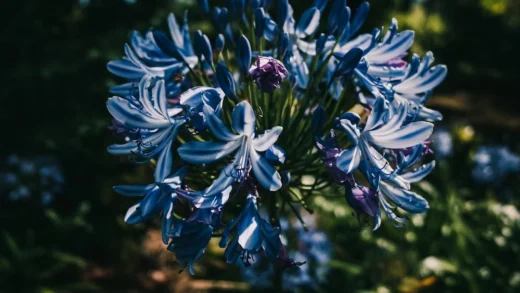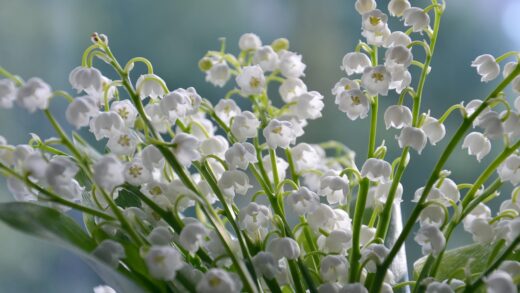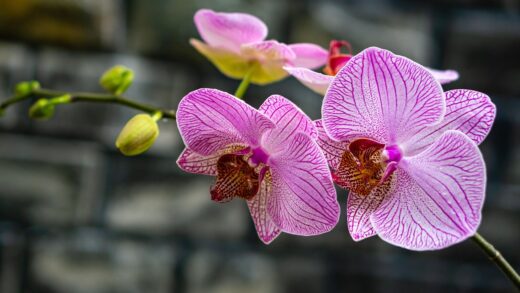Even with the most diligent care, the gardenia can sometimes fall prey to a variety of diseases and pests. These issues can be a source of great frustration for gardeners, potentially marring the plant’s beautiful foliage and hindering its ability to produce its signature fragrant blooms. However, a proactive approach centered on prevention, early detection, and targeted intervention can manage these challenges effectively. Understanding the common culprits, from tiny sap-sucking insects to microscopic fungal spores, is the first step toward protecting your plant. A healthy, well-cared-for gardenia is naturally more resilient to attacks, but knowing how to identify and respond to problems when they do arise is an essential skill for ensuring the long-term vitality of this cherished shrub.
The key to managing pests and diseases is to create an environment that is favorable for the gardenia but inhospitable to its enemies. Many problems are opportunistic, taking hold when a plant is already weakened by environmental stress. Issues such as improper watering, poor air circulation, or incorrect light exposure can make a gardenia more susceptible to infestations and infections. Therefore, the principles of good overall care—providing acidic soil, consistent moisture, and adequate light—form the first and most important line of defense against potential health issues.
Regular inspection is the cornerstone of an effective integrated pest management (IPM) strategy. By taking the time to closely examine your gardenia on a routine basis, you can spot the early signs of trouble before they escalate into a full-blown crisis. This means looking not just at the top of the leaves, but also checking their undersides, the stems, and the leaf axils where pests often hide. Noticing a single mealybug or a small patch of powdery mildew early on is far easier to treat than dealing with a widespread infestation that has had weeks to establish itself.
When treatment is necessary, it is often best to start with the least toxic methods available. For many common pests, mechanical removal or the application of gentle solutions like insecticidal soap or horticultural oil can be highly effective without resorting to harsh chemical pesticides. Similarly, many fungal diseases can be managed by correcting environmental conditions and using organic-based fungicides. This approach not only protects your plant but also safeguards beneficial insects and the broader garden ecosystem.
Common insect pests
Gardenias can be a target for several types of sap-sucking insects that feed on the plant’s vital fluids, weakening it over time. Aphids are one of the most common culprits. These small, pear-shaped insects can be green, black, or yellow and typically congregate in clusters on new growth and the undersides of leaves. They excrete a sticky substance called honeydew, which can lead to sooty mold. A strong jet of water can often dislodge them, or they can be treated with insecticidal soap.
More articles on this topic
Another prevalent pest is the mealybug, which appears as small, white, cottony masses, often tucked into the crevices where leaves join the stem. Like aphids, they feed on sap and produce honeydew. Due to their waxy, protective coating, they can be more resistant to sprays. For small infestations, a cotton swab dipped in rubbing alcohol can be used to manually remove and kill them on contact. For larger outbreaks, repeated applications of horticultural oil or insecticidal soap may be required.
Spider mites are a particularly troublesome pest, especially for indoor gardenias in dry conditions. These tiny arachnids are difficult to see with the naked eye, but their presence is often revealed by fine, silky webbing on the plant and a stippled, faded appearance on the leaves. They thrive in hot, dry environments, so increasing humidity around the plant can help deter them. Thoroughly spraying the plant, especially the undersides of the leaves, with water or horticultural oil is the most effective way to control them.
Whiteflies are small, moth-like insects that, when disturbed, will fly up from the plant in a cloud. Both the adults and their nymph stages feed on plant sap, causing yellowing and weakening of the plant. They are also prolific producers of honeydew. Yellow sticky traps can be effective at capturing the flying adults, which helps to monitor and reduce their population. To control the nymphs on the leaves, applications of insecticidal soap or neem oil are generally the most effective treatments.
Fungal and bacterial diseases
One of the most common fungal diseases to affect gardenias is powdery mildew. This disease is easily identified by the characteristic white or grayish, powdery patches that appear on the surfaces of leaves and sometimes on the buds and stems. Powdery mildew thrives in conditions of high humidity and poor air circulation. It can be managed by improving airflow around the plant through proper spacing and pruning, and by avoiding overhead watering that wets the foliage. In many cases, fungicidal sprays, including those based on neem oil or potassium bicarbonate, can effectively control the spread of the disease.
More articles on this topic
Sooty mold is another common fungal issue, but it is unique in that it does not directly infect the plant tissue. Instead, this black, powdery fungus grows on the sweet, sticky honeydew excreted by sap-sucking insects like aphids, mealybugs, and whiteflies. While sooty mold itself does not harm the plant by feeding on it, a thick coating can block sunlight and interfere with photosynthesis. The key to controlling sooty mold is to eliminate the pest infestation that is producing the honeydew. Once the insects are gone, the sooty mold can often be gently washed off the leaves with a stream of water.
Root rot is a far more serious disease, caused by various soil-borne fungi that attack the plant’s root system. The primary cause of root rot is almost always overwatering or poorly draining soil. When the roots are deprived of oxygen in waterlogged conditions, they become vulnerable to these pathogens. The symptoms above ground include wilting, yellowing leaves, and stunted growth, which can ironically be mistaken for signs of underwatering. To prevent root rot, always use a well-draining, acidic soil mix and allow the soil to dry out partially between waterings. Once established, root rot is very difficult to cure.
Leaf spot diseases, caused by various fungi or bacteria, can also appear on gardenia foliage. These manifest as distinct spots or blotches on the leaves, which may be brown, black, or tan, and sometimes have a yellow halo around them. These diseases are often spread by water splashing onto the leaves. To manage leaf spot, it is important to remove and destroy the affected leaves to prevent the spread of spores. Ensure good air circulation, and water the soil directly, keeping the foliage as dry as possible. Fungicidal sprays can be used if the infection is severe.
Physiological problems and environmental stress
One of the most common physiological problems encountered by gardenia growers is bud drop. This is when the plant develops flower buds, but they fall off before they have a chance to open. This is not a disease or a pest issue but rather the plant’s response to environmental stress. The cause can be a wide range of factors, including sudden changes in temperature, low humidity, drafts, inconsistent watering (either too much or too little), or insufficient light. To resolve bud drop, you must identify and correct the underlying environmental stressor by providing a more stable and consistent environment for the plant.
Yellowing leaves, or chlorosis, is another frequent complaint that is typically a sign of an environmental or nutritional issue rather than a disease. As discussed in the context of nutrition, the most common cause is an iron deficiency resulting from a soil pH that is too high. However, yellowing leaves can also be a symptom of overwatering, underwatering, or root damage. It is important to diagnose the cause correctly. If the yellowing is on new leaves with green veins, it is likely iron chlorosis. If it is on older leaves or the whole plant, consider your watering practices first.
Leaf scorch is a physical damage problem caused by excessive direct sunlight. The leaves may develop brown, dry, or crispy patches, particularly on the parts of the plant most exposed to the sun’s intense afternoon rays. This is a sign that the plant’s location is not ideal. To prevent leaf scorch, move the plant to a location where it receives bright, but indirect or filtered, sunlight. For outdoor plants, this may mean transplanting it to a more protected spot or providing some form of shade during the hottest part of the day.
Stunted growth can be a symptom of many different problems, making it a challenging issue to diagnose. It could be the result of a pest infestation draining the plant’s resources, a nutrient deficiency, root rot, or simply being pot-bound. If your gardenia is not growing as expected, a systematic check of all its conditions is in order. Examine the plant for pests, review your fertilizer regimen, check the soil moisture to rule out root rot, and inspect the root system to see if it needs to be repotted into a larger container with fresh soil.
Integrated pest management strategies
Integrated Pest Management (IPM) is a holistic and sustainable approach to dealing with garden pests and diseases. The first and most important principle of IPM is prevention. This involves creating a healthy growing environment that minimizes stress on the gardenia and makes it less attractive to pests. This includes choosing the right location, preparing the soil correctly, watering and fertilizing appropriately, and ensuring good air circulation through proper pruning. A strong, healthy plant is its own best defense against many problems.
The next step in IPM is regular monitoring and correct identification. Make it a habit to inspect your gardenia closely at least once a week. Use a magnifying glass if necessary to look for tiny pests like spider mites. If you find a pest or see signs of a disease, it is crucial to identify it correctly, as the most effective treatment will vary depending on the specific problem. Misidentification can lead to ineffective treatments and may allow the problem to worsen. There are many online resources and local extension services that can help with identification.
When a problem is identified, IPM prioritizes the use of the least toxic control methods first. This can include physical or mechanical controls, such as hand-picking larger pests like caterpillars, using a strong spray of water to dislodge aphids, or pruning away diseased leaves. Biological controls, such as releasing beneficial insects like ladybugs that prey on aphids, can also be a highly effective and natural solution for outdoor gardens. These methods resolve the issue with minimal disruption to the ecosystem.
Chemical controls, even organic or naturally derived ones like insecticidal soap, neem oil, or horticultural oil, are used as a last resort in an IPM strategy, and only when monitoring indicates they are necessary. These products should be applied carefully, following all label directions, and targeted specifically at the affected areas of the plant. The goal is to control the pest or disease with the minimum possible impact on the plant itself and the surrounding environment, including beneficial insects.


















